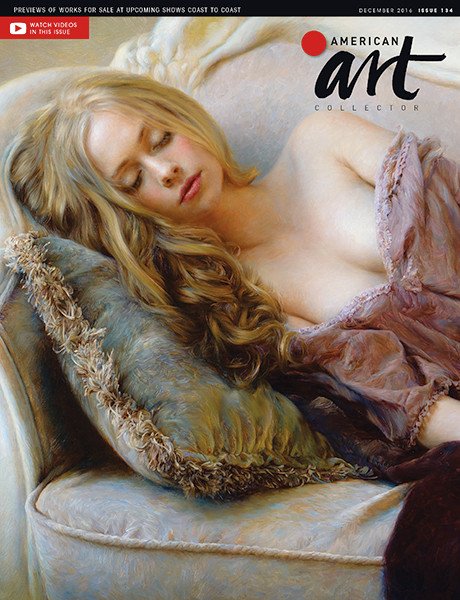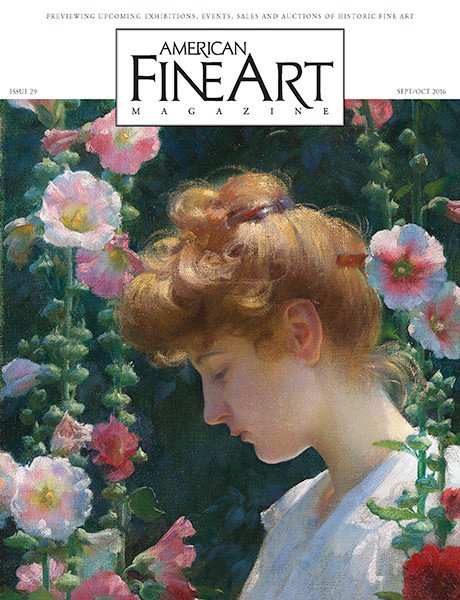The city of Seattle—the government, its cultural institutions and even the visitor’s bureau—make something very clear: “Seattle is Indian Country.”
The Northwest Coast destination, known for its green forests and emerald waters, has been home to Indigenous people for as long as 12,000 years, and today that rich history and culture flourishes all around the city, from its magnificent museums and many Indigenous-owned galleries to its tribe-focused heritage sites and dozens of displays of public art. Art lives and breathes in the city, and the vast majority of it is by Native American artists, particularly the Coast Salish people whose ancestral lands are where Seattle now sits.
 A view of Downtown Seattle. Photo by Rachael Jones. Courtesy Visit Seattle. Even the name itself is special to the region. Seattle is named after Chief Seattle, the hereditary chief of the Suquamish and Duwamish people. In 1854, while negotiating with the federal government on treaties and lands, Chief Seattle spoke of the beauty of the region: “Every part of this soil is sacred in the estimation of my people. Every hillside, every valley, every plain and grove, has been hallowed by some sad or happy event in days long vanished. Even the rocks, which seem to be dumb and dead as [they] swelter in the sun along the silent shore, thrill with memories of stirring events connected with the lives of my people, and the very dust upon which you now stand responds more lovingly to their footsteps than yours, because it is rich with the blood of our ancestors, and our bare feet are conscious of the sympathetic touch. Our departed braves, fond mothers, glad, happy hearted maidens, and even the little children who lived here and rejoiced here for a brief season, will love these somber solitudes and at eventide they greet shadowy returning spirits.”
A view of Downtown Seattle. Photo by Rachael Jones. Courtesy Visit Seattle. Even the name itself is special to the region. Seattle is named after Chief Seattle, the hereditary chief of the Suquamish and Duwamish people. In 1854, while negotiating with the federal government on treaties and lands, Chief Seattle spoke of the beauty of the region: “Every part of this soil is sacred in the estimation of my people. Every hillside, every valley, every plain and grove, has been hallowed by some sad or happy event in days long vanished. Even the rocks, which seem to be dumb and dead as [they] swelter in the sun along the silent shore, thrill with memories of stirring events connected with the lives of my people, and the very dust upon which you now stand responds more lovingly to their footsteps than yours, because it is rich with the blood of our ancestors, and our bare feet are conscious of the sympathetic touch. Our departed braves, fond mothers, glad, happy hearted maidens, and even the little children who lived here and rejoiced here for a brief season, will love these somber solitudes and at eventide they greet shadowy returning spirits.”

Pioneer Square/Occidental Square Park in Downtown Seattle. Photo by Alabastro Photography. Courtesy Visit Seattle.
These lands that Chief Seattle spoke of are today filled with cultural destinations for anyone who is interested in experiencing the Northwest Coast’s treasures. Many of the big highlights are museums, the majority of which include entire wings, galleries, rotating exhibitions or major segments within the permanent collections on Indigenous art from the Northwest Coast. Works include paintings, canoes, carved masks and rattles, Chilkat blankets and countless objects done in the famous formline style (sometimes referred to as Coast Salish style) that is a common sight in the Northwest. There are also numerous story poles (also known as totem poles) that can be found at public museums, parks and in public spaces.
Tribes represented include Colville, Lummi, Makah, Muckleshoot, Nisqually, Nooksack, Puyallup, Samish, Skokomish, Suquamish, Yakama and many others—Washington has 29 federally recognized tribes.

A canoe display at the Burke Museum of Natural History & Culture. Courtesy Visit Seattle.
Musuems worth adding to a travel itinerary are the Seattle Art Museum, which has an extensive collection of masked and carved objects; Frye Art Museum, home to a large collection of modern and contemporary art; Center on Contemporary Art, another strong modern institution with inclusion by Indigenous artists; Burke Museum of Natural History and Culture, which has permanent and rotating exhibitions on Native Americans from the Northwest Coast; the Duwamish Longhouse & Cultural Center, home to a gallery and exhibit space dedicated to the Duwamish people; Daybreak Star Indian Cultural Center, home to the United Indians of All Tribes Foundation; and the Suquamish Museum, located on the other side of Puget Sound.

Visitors at the Burke Museum of Natural History & Culture. Photo by Dennis Wise and Mark Stone. Courtesy Visit Seattle.
While these institutions offer opportunities to view and learn about the region and its artists, nearby galleries offer opportunities for purchasing art and supporting artists directly. Galleries include Tidelands, artist Matika Wilbur’s new gallery, photography studio and boutique; Stonington Gallery, a 46-year-old gallery with deep roots in Native American art; and Steinbrueck Native Gallery, which recently unveiled a collection of carved paddles. Other galleries are Eighth Generation, Northwest Tribal Art and The Raven’s Nest. All six are located in Downtown Seattle, in the very heart of the city.

Dan Friday (Lummi Nation), hand-blown glass bear
Visitors to Seattle should also consider visiting many of the public parks and spaces where Native American history and artwork are on display. These include Pioneer Square, home of the Iron Pergola and the Tlingit Indian Totem Pole, which have a long and fascinating history that involves theft, fire and gifts from Tlingit carvers; and the Seattle Waterfront, which is connected by the street Dzidzilalich (pronounced: dzee-dzuh-lah-leech). The Waterfront also has portions that were designed by landscape architect Valerie Segrest (Muckleshoot), who is also an advocate for food sovereignty and traditional food systems. Other public art can be seen at the Seattle Convention Center’s Summit Building, home to Mowitch Man, a large monument by Andrea Wilbur-Sigo (Squaxin Island and Skokomish); and the Seattle Aquarium and the Bill & Melinda Gates Foundation, both of which feature public displays by Seattle artist Dan Friday (Lummi Nation).

Glass salmon on display during the 2024 dedication of new work by Dan Friday (Lummi Nation) at the Seattle Aquarium. Courtesy the artist.
“It is a great honor for me to tell these family stories and Coast Salish-inspired themes,” says Friday, who maintains a glass studio in Seattle. “We come from an oral tradition so bringing these narratives to life in three-dimensional forms in materials with such permanence like glass and bronze brings me a lot of satisfaction.”
Friday adds that Seattle is a melting pot of many cultures that call Seattle home. “It’s a very international city with large populations of Native American and First Nations people, as well as people from Asia, Mexico and Canada. “We’re a coastal city with a lot of integration and diversity, especially with the Coast Salish people and its rich tribal cultures that can be found in the names of the areas and streets. There is a giant Native presence here.”

Dan Friday (Lummi Nation) speaks at the Bill & Melinda Gates Foundation during the 2025 dedication of one of his works. Courtesy the artist.

Stonington Gallery in Downtown Seattle. Photo by Rudy Willingham. Courtesy Visit Seattle.
Friday, as well as Tlingit glassblower Preston Singletary, represents the hugely popular art glass movement that largely began in Seattle. (Both artists are represented by Blue Rain Gallery in Santa Fe, New Mexico, which has played an influential role in art glass within the Southwest.) “I’ve been blowing glass for more than 30 years. Outside of Murano, Italy, Seattle is the biggest venue for the studio art glass movement,” Friday says. “I worked for [Dale] Chihuly for about 24 years. That’s how I cut my teeth in the world of glass. It’s come so far that today you can go to a university to get a degree in glass now—it’s more mainstream. It’s a complicated craft, but it provides me a great opportunity to show Coast Salish artistry.” Friday’s work can be seen at www.fridayglass.com, or on Instagram (@danfriday).

Preston Singletary work on display in his Seattle studio. Photo by Megan Swann. Courtesy Visit Seattle.
Other aspects of Indigenous culture in Seattle are the prevalence of Lushootseed, the Coast Salish language that is being revitalized through youth and adult educational programs; Chief Seattle Days, the annual August bash that celebrates the traditional culture around Puget Sound; and Canoe Journey, the summer event that features a long (sometimes up to a month) canoe adventure to a nearby host nation (Elwha Beach in 2025). The Canoe Journey website, which urges participants and visitors to use “canoe” and never “boat,” also lists 10 canoe rules that serve as life lessons: Every stroke taken is one less need taken. There is to be no abuse of self or others. Be flexible. The gift of each enriches all. We all pull and support each other. A hungry person has no charity. Experiences are not enhanced through criticism. The journey is what we enjoy. A good teacher allows the student to learn. When given any choice at all, be a worker bee—make honey.”
Whether it’s on the water in a canoe, in the heart of downtown or even from the heights of Seattle’s Space Needle, the beauty of this region is unmistakable, as is the influence of Native American culture and traditions, which run through the very DNA of Seattle and its identity. —
SEATTLE EVENTS
First Salmon Celebration
This spring and summer ceremony is observed by many tribes. According to tradition, the first salmon caught each season is welcomed as a sacred guest, and treated with respect. Contact individual tribes for information about dates and locations. A directory of tribes can be found at goia.wa.gov.
Spirit of Indigenous People Festival
This June festival brings together American Indians, Alaska Natives and First Nations People for a powwow, Native art market, music and dance performances, and a cultural celebration. This year’s event will take place June 7 at the Seattle Center. www.seattlecenter.com
Seafair Indian Days Powwow
Featuring hundreds of dancers in full regalia, dozens of drum groups and thousands of spectators, the Seafair Indian Days Powwow celebrates the richness of Native American cultures. The event is held at the Daybreak Star Indian Cultural Center in Discovery Park. This year it takes place July 18 to 20. www.unitedindians.org
Canoe Journey
This popular event features canoe families representing tribes throughout the region as they travel (sometimes for weeks) to host nations in large cedar dugout canoes. The event culminates in a week-long celebration at the destination village or tribal community. This year the landing will be at Elwha Beach on July 31, with protocol and celebration on August 1 through 5. facebook.com/OfficalTribalJourneys
Chief Seattle Days
Held at the Port Madison Reservation, this historic celebration includes traditional dancing, canoe races, Native foods and artwork, and a ceremony honoring Chief Seattle. The event is held in August. www.suquamish.org
Indigenous Showcase
The Northwest Film Forum, in partnership with Longhouse Media, hosts the ongoing Indigenous Showcase, which presents the work of emerging Native American and Indigenous filmmakers. www.nwfilmforum.org
Source: Visit Seattle
Powered by Froala Editor

















































